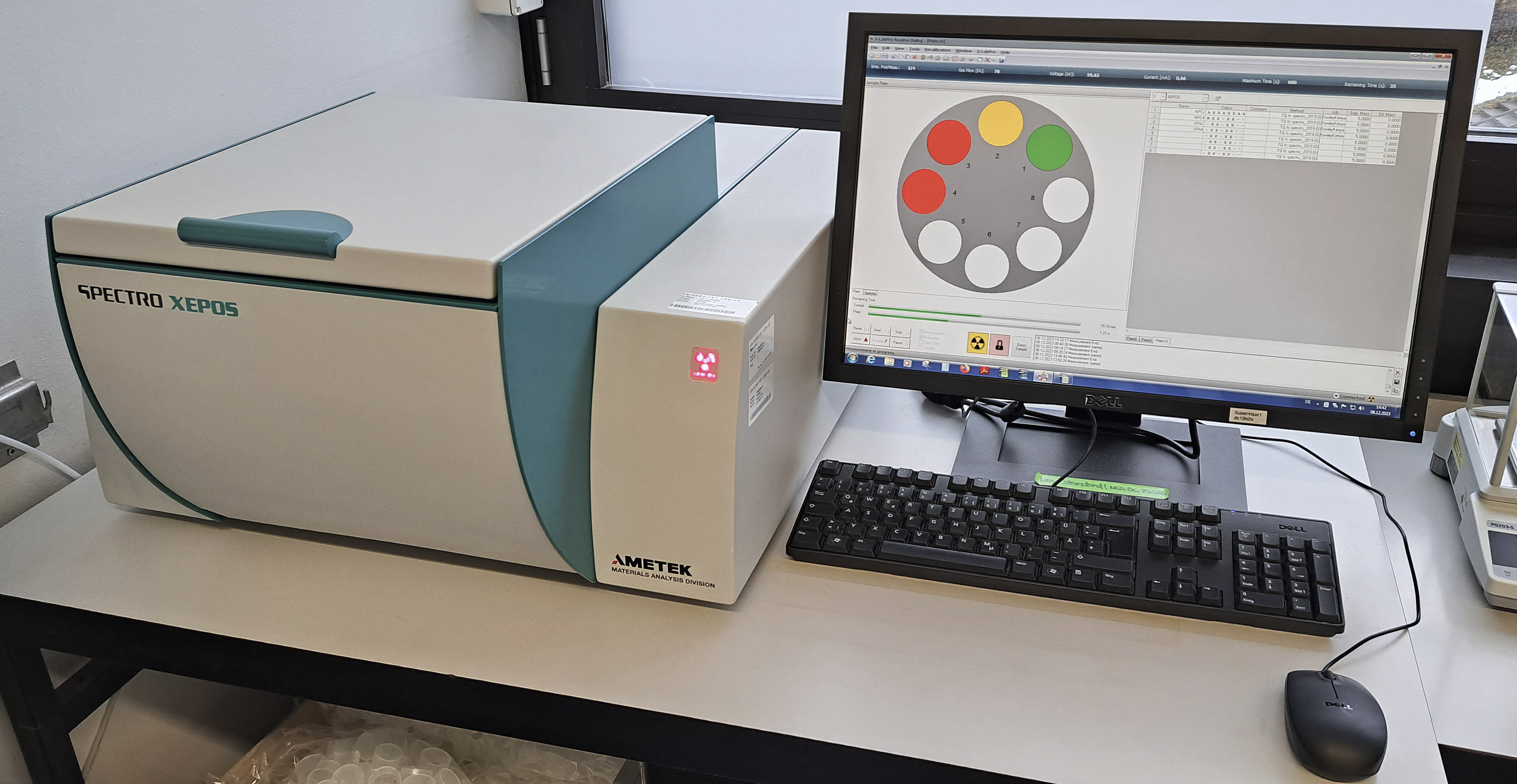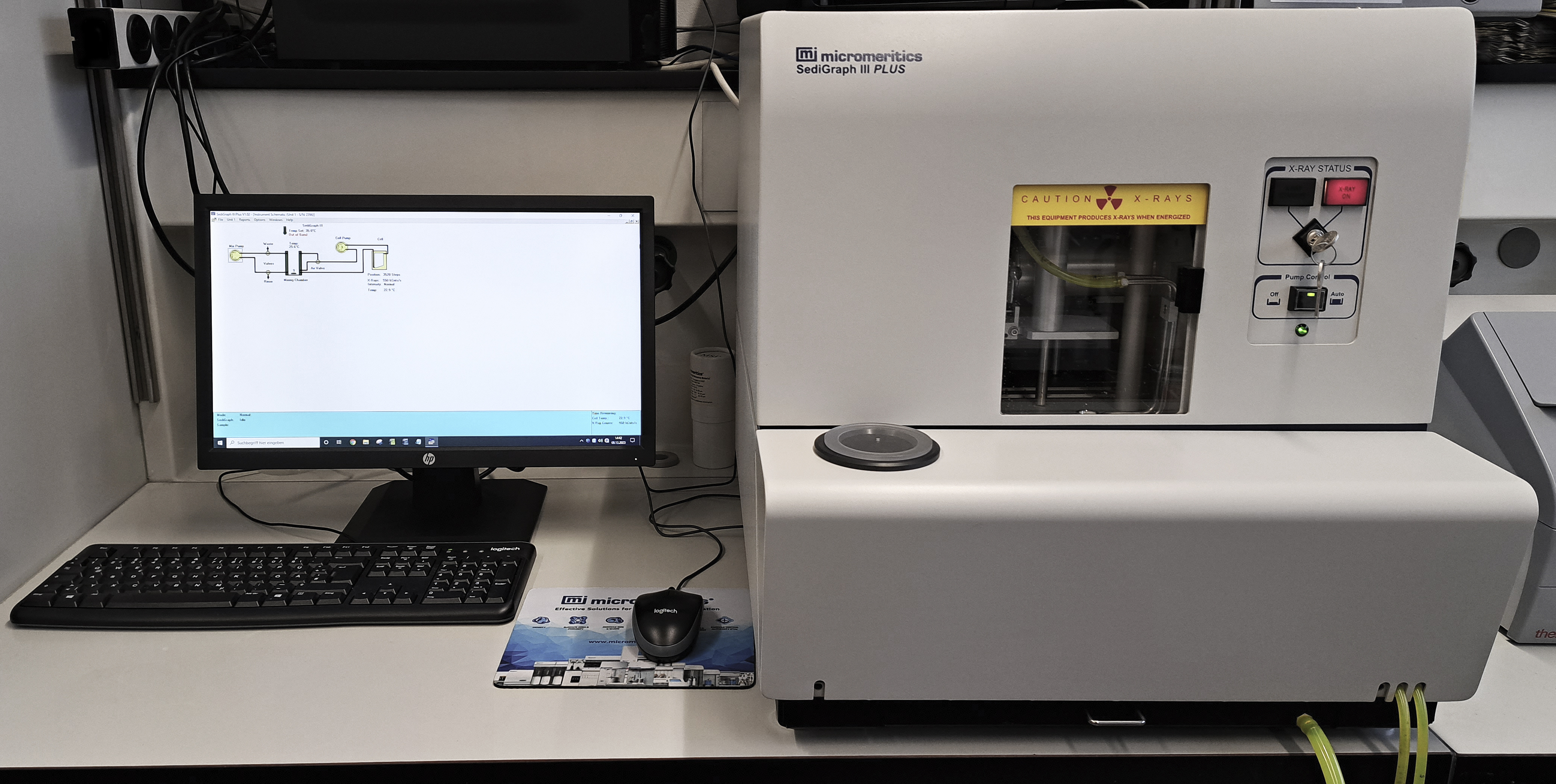GeoLabs
GeoLabs are the shared laboratory services of several GIUZ research units and are open for scientific collaboration and hosting of visiting researchers. More information on the groups and individuals involved can be found at the bottom of the page.
Sample preparation / physical analyses
Sample preparation depends on sample type (e.g., plant, soil, sediment, rock, water) and planned analyses. Therefore, adequate drying (freeze-, air-, oven-drying), homogenization (crushing, grinding, milling), particle-size separation (wet- or dry sieving, sedimentation, sedimentometry (see picture), density fractionation), purification (filtration) or combinations of several sample pretreatments can be selected before further targeted analyses.
Inorganic (geo-)chemical analyses

Mineral composition of soils and soil nutrients are important aspects to understand the soil development as well as general soil characteristics. The portfolio of our laboratory instrumentation to study soil mineralogy and nutrient composition covers simple methodologies like spectrophotometry and reflectometry, classical high-sophisticated methods such as X-ray diffractometry (XRD), X-ray fluorescences (XRF) and atomic absorption spectroscopy (AAS, see picture) and implements modern techniques such as diffuse reflectance infrared Fourier transform spectroscopy (DRIFT) and tandem inductive coupled plasma mass spectrometry (ICP-MS/MS).
Organic (geo-)chemical analyses
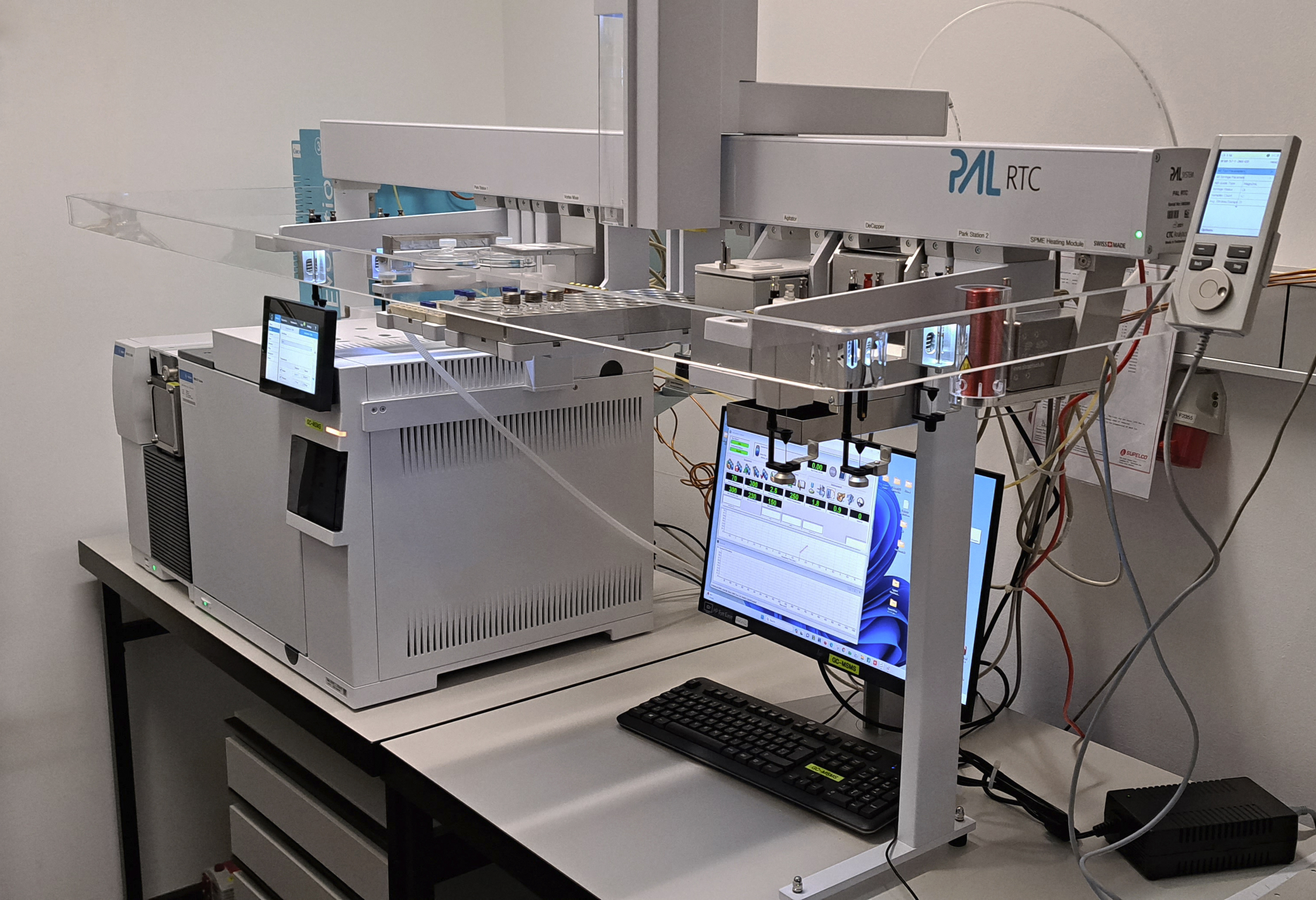
Another expertise is the quantification of different sources of organic matter as well as the assessment organic matter cycling in the environments using so-called molecular marker substances. These cover substances that enable tracing of plant-derived organic matter (e.g., pigments, free extractable and bound lipids, lignin monomers, suberin and cutin monomers), microorganism-derived organic matter (e.g., phospholipid fatty acids - PLFAs and with colleagues from Universitée Sorbonne glycerol dialkyl glycerol tetraethers - GDGTs), burning residues (e.g., benzene polycarboxylic acids - BPCAs and polycyclic aromatic hydrocarbons - PAHs) as well as contamination (e.g., plasticisers) in plants, soils and sediments. These compound classes are then characterized and quantified by gas-chromatography (GC) or high-perfomance liquid chromatography (HPLC), equipped with flame-ionisation (FID), mass spectrometry (MS), tandem mass spectrometry (MS/MS), isotope-ratio mass spectrometry (IRMS), diode array (DAD) or evaporative light scattering (ELSD) detectors.
Stable isotope analyses
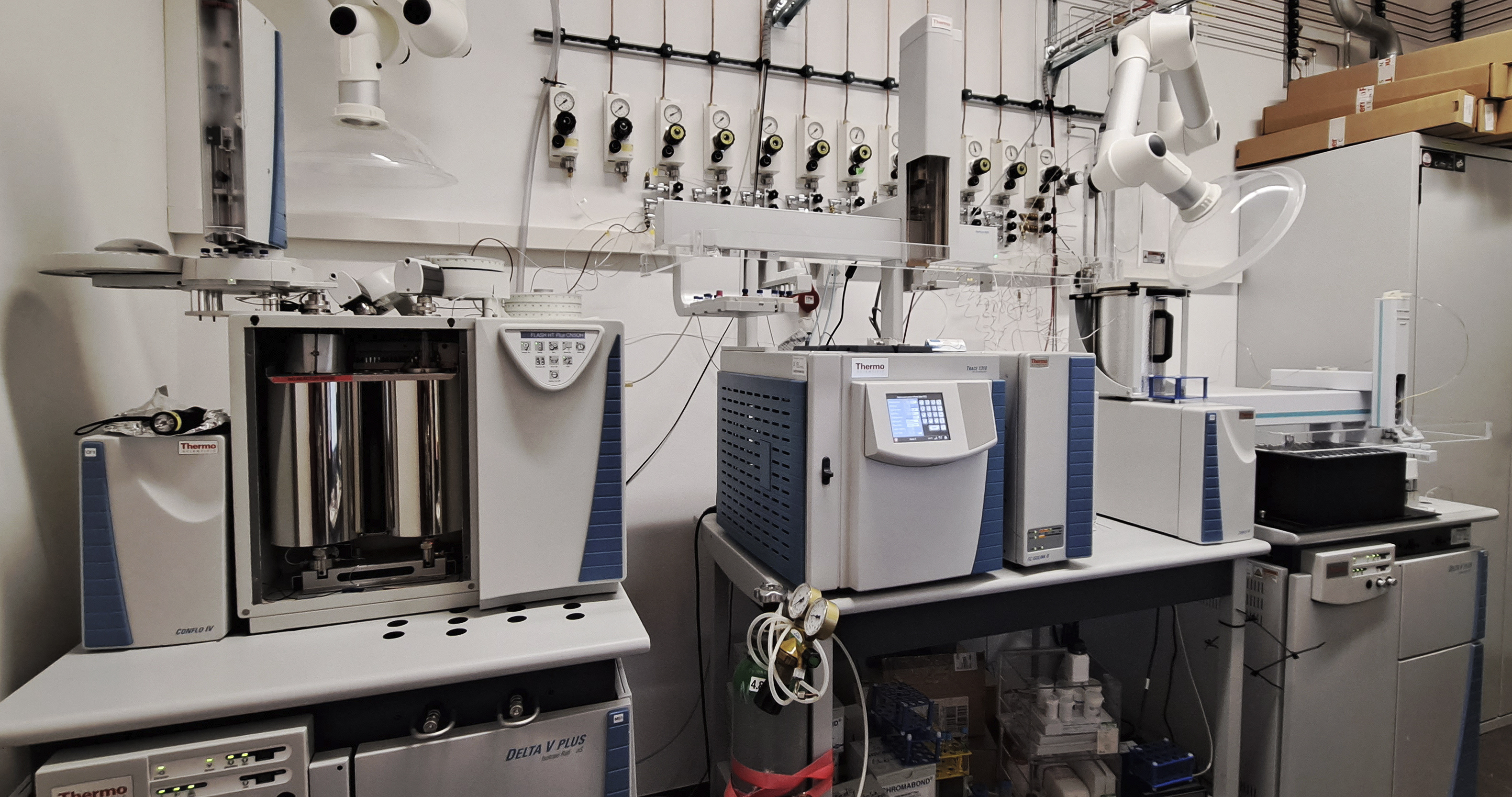
Natural abundance stable isotope analyses as well as conduction of stable isotope labeling experiments and subsequent measurements are core expertises of our laboratory. Continuous- and pulse/chase-labeling with 13C and the analysis of d2H, d13C, d15N and d18O composition of solid, liquid and gas samples including also compound-specific isotope analyses are performed on a routine basis using cavity ring-down spectroscopy (CRDS) and isotope-ratio mass spectrometry (IRMS) facilities.
Dating / radioactive isotope analyses

The geochronology laboratories offer the following services:
- surface exposure dating (10Be, 26Al)
- radiocarbon dating (14C)
For further details, see here.
In addition, and as a unique feature, the geochronology laboratories also determine 239+240Pu in soils and sediments to derive surface erosion rates. Some information about Pu preparation and measurement is given below.
Decadal soil erosion rates can be measured by using fallout radionuclides. 239+240Pu was globally dispersed during thermonuclear weapon testing mainly between 1952 and 1964. 239+240Pu can be used as an excellent soil erosion tracer. Prior to mass spectrometry analysis (QQQ-ICP-MS), the milled fine earth is dry-ashed and spiked with 30 pg (c. 0.0044 Bq) of a 242Pu tracer solution (NIST 4334). The samples are leached with 16 M HNO3. Pu species are adjusted to the Pu (IV) oxidation state using first an acidified FeSO4*7H2O solution and subsequently a NaNO2 solution. Tetravalent Pu is then separated from the leached solution using a Pu-selective TEVA resin. The resin is collected in a pipette tip equipped with a glass-wool plug. This column is rinsed to remove unretained matrix elements (e.g., U, Th) and Pu is eluted using 0.05 M aqueous ammonium oxalate.
Spatial genetic analyses

Spatial genetic analyses focus on the heritable and environmentally responsive variation of organisms in their environments. The following types of analyses are conducted:
- genotyping and genomic analyses including genome-wide association studies (GWAS) for ecological samples using customized open-source informatics pipelines (extractions done in-group, sequencing done in collaboration with the Functional Genomics Center Zurich, FGCZ and other providers)
- analysis of gene transcript abundance and transcriptomic analyses (extractions and quantitative PCR done in-group, or RNAseq in collaboration with the FGCZ and other providers)
- targeted and untargeted analyses of (biogenic) volatile organic compounds by thermal desorption or injection of volatile liquid samples (ca. C5-C20, Shimadzu TD30R and AOC-30i autosamplers coupled with a GCMS-QP2020 NX)
- metabolomics analyses from samples in solution (in collaboration with the Mass Spectrometry group, Department of Chemistry)
- spectroscopy of ecological samples and systems with multispectral and high-resolution ("hyperspectral") sensors, in situ with handheld or aerial platforms and in the laboratory, as part of the Remote Sensing Laboratories at the Department of Geography
- mapping, geolocation, and three-dimensional models of individuals in situ
Field analyses
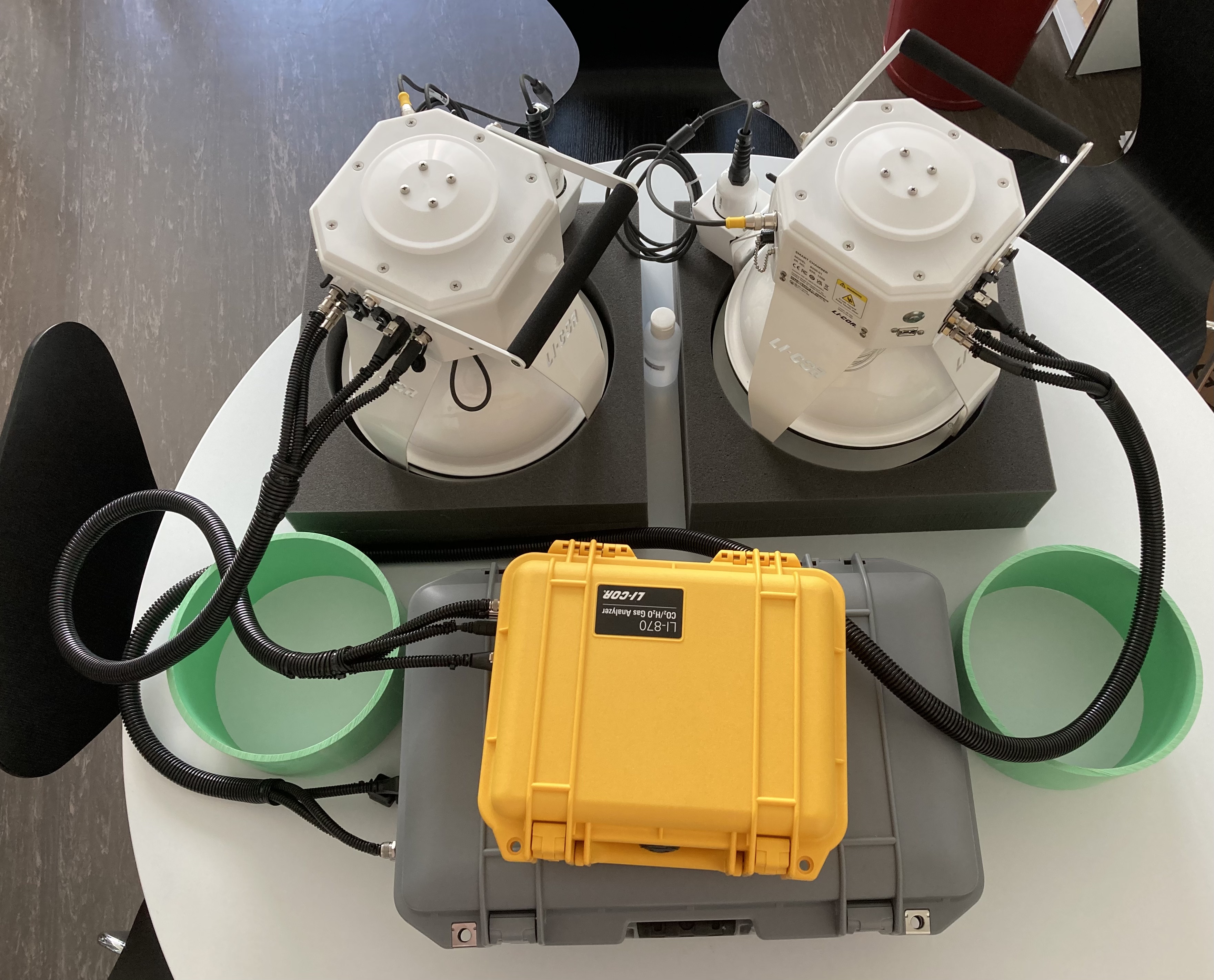
In addition to our laboratory equipment, we are also well prepared for field-based analyses of various various plant, soil and landscape related features. These techniques include, e.g., portable instruments like chlorophyll meters, conductivity meters, luminescence dating, pH-meters, soil respiration devices, spectrophotometer, weather station, and X-ray fluorescence.
Services
We are open to scientific collaborations and welcome visiting researchers that want to use our expertise and infrastructure. Please contact our operational leaders, if you are interested in more information.
We provide several scientific services such as 14C- and 10Be-dating of environmental matricessee more.
Furthermore, standard materials for the analysis of pyrogenic organic matter is provided by us see more.
